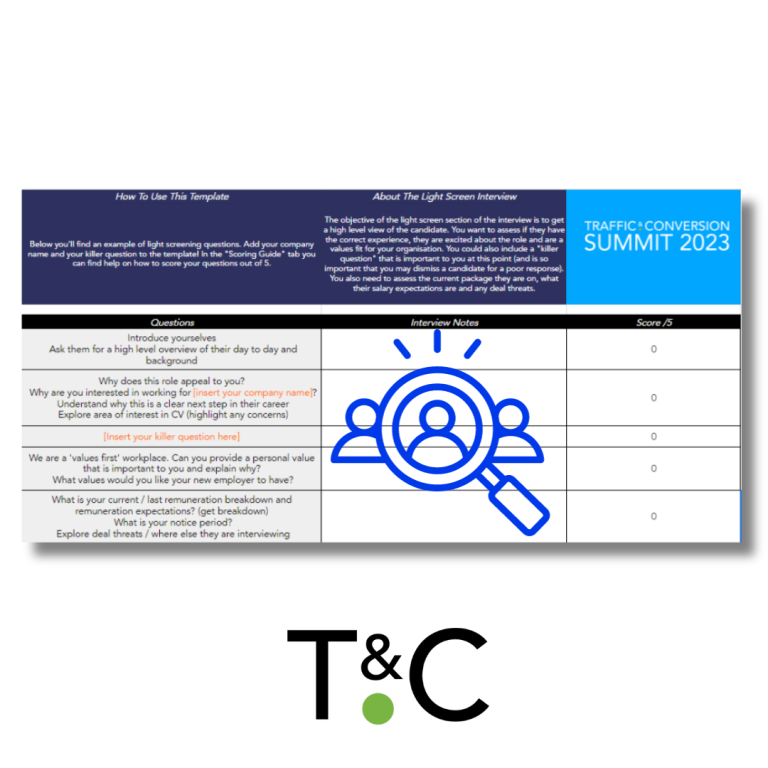The success of your business can often come down to the quality of your talent.
But in the wake of the “Great Resignation” and the war for talent at an all-time high, businesses are feeling the heat more than ever.
Hiring and retaining the right people for your business is a top priority if you want to scale your business. Because even with a great vision and killer strategies… you won’t go far without the right people in the right seats doing the right things.
Here are the top 14 strategies to find and retain talent:
1. Build a strong employment brand
It’s all about marketing. Develop a strong employment brand, build a robust candidate experience and create an employee experience that allows your people to show up as their best selves. It’s essential to showcase your organization’s culture, values, and mission so make sure your website, social media pages, and job postings reflect your company’s culture and values.
2. Offer flexible work arrangements

Offering flexible work arrangements such as remote work, flexible hours or part-time work is now the foundation for great employers. Consider the workplace and what employees need. Listening to what your employees want through surveys will help.
3. Strengthen your workplace culture and values and hire based on a values fit
Candidates have a lot of organizations to choose from, so don’t rely on the standard levers of salary, benefit and job descriptions to attract or retain them. Define and strengthen your workplace culture and values, which your competitors can’t “match” as easily.
Have your core values defined and don’t just consider skills and experience during the interview process. Ensure your potential candidates’ value system aligns with yours.
4. Offer competitive compensation and benefits
Although it’s not the only thing that matters to employees, a competitive salary is still top of mind when job seekers look for a new job. If you want to hire skilled workers, you must be prepared to pay them what they are worth. Start by reviewing the industry average for employee salaries. You can also use salary benchmarks based on location, role and experience.
Pay isn’t the only way to compensate employees for a job well done. Consider other forms of compensation, such as employee retirement plans, bonuses, paid time off and stock options. Offering a diverse combination of compensation can make a job offer more attractive.
5. Be intentional with your hiring and onboarding process

According to a survey by BambooHR, 31% of workers leave a job within the first six months, and 68% of those depart within the first three months. A great recruitment and onboarding process can reduce turnover rates by helping new employees feel connected to their roles.
- Recruitment: Find out which websites and job boards most align with your organization and the employees you are looking for. You can also use recruitment software or applicant tracking systems to manage your talent pipeline from start to finish.
- Interviewing: It is important to have a consistent and fair recruitment process by using an interview scorecard. Train your hiring managers on how to conduct interviews (including what questions they can and can’t ask!). You can download our interview scorecard template here.
- Onboarding: hiring doesn’t stop when you offer an applicant the job and they accept. You need a comprehensive onboarding process that welcomes and trains the new employee and sets them up for success.
6. Provide opportunities for growth and development .

A lack of career development opportunities is the biggest reason why employees quit their jobs. If you want to retain your most valued employees, you need to give them a clear path to future development.
Every employee needs to have their own development plan that is unique and can help them reach their full potential. You need to:
- Identify clear goals to work towards
- Offer training courses for employees to learn and build their knowledge.
- Offer stretch assignments just beyond the employees comfort zone. It will expand their skill sets and build confidence.
7. Provide work-life balance & invest in well-being
Work-life balance is essential for employee satisfaction and retention. Offer programs such as employee wellness programs, paid time off, and parental leave to help your employees balance their work and personal lives.
By investing in your employees’ well-being you are ensuring that they stay healthy and engaged. Offer mental health support, gym memberships, healthy food options, and other wellness programs to promote a healthy lifestyle.
8. Train your management staff

Good managers can have a big impact on employee retention. Gallup found that 52% of departing employees claim their manager or organization could have done something to prevent them from resigning.
Leadership training programs can help your team build their leadership skills and better manage employees, resulting in a higher employee retention rate.
9. Communicate your goals and strategy clearly

When employees understand your businesses goals and strategy, they are better able to align their work with these objectives. This can help to ensure that everyone is working towards the same goals and can increase productivity and efficiency.
Clear communication of goals and strategy can also motivate employees to work harder and achieve more. When employees see how their work fits into the bigger picture, they are more likely to feel a sense of purpose and pride in their work.
10. Recognize and reward good performance:
Recognize and reward good performance to keep your employees motivated and engaged. Offer incentives, bonuses, and promotions for exceptional performance. Companies need to invest in and reward emerging talent, which is slightly different than hiring the “best” talent.
It is easier to retain top employees who have been recognized for their effort. Most workers will also stay where there is a positive culture that discourages politics and eliminates mismanagement.
11. Monitor employee engagement

Employee engagement is important for several reasons, including:
- Increased Productivity: Engaged employees tend to be more productive and committed to their work (engaged employees are also less likely to be absent at work) .
- Higher Retention Rates: When employees feel engaged, they are more likely to stay with their employer for the long-term. This helps companies to retain valuable talent and reduces the costs associated with hiring.
- Better Teamwork: Engaged employees are more likely to work well with others and collaborate effectively. This can lead to better teamwork and a more positive work environment.
- Increased Innovation: Engaged employees tend to be more creative and willing to try new things.
12. Foster a culture of diversity and inclusion

A diverse and inclusive workplace is important because it can lead to a more innovative, engaged and productive team. Make sure you create a culture of diversity and inclusion that values and respects employees’ differences.
By creating a diverse and inclusive workplace you can expect:
- Increased Creativity: A diverse workforce brings together people from different backgrounds, experiences, and perspectives. This can lead to increased creativity and innovation, as employees bring new ideas and solutions to the table.
- Improved Problem-Solving: A diverse team is better equipped to solve complex problems because they are able to draw on a wider range of experiences and viewpoints. This can lead to more effective decision-making and problem-solving.
- Higher Employee Engagement and Retention: When employees feel included and valued, they are more likely to be engaged and committed to their work.
- Better Customer Relationships: A diverse workforce can help companies to better understand and connect with their customers, who may come from a variety of backgrounds and cultures.
13. Provide regular feedback
Regular feedback can help your employees improve their performance and stay engaged. Offer performance reviews, goal setting, and coaching to help your employees grow and develop.
In the book “Thanks For the Feedback”, Douglas Stone and Sheila Heen say that there are 3 types of feedback:
- Evaluation: Evaluation is assessment feedback. It tells you where you stand, aligns expectations, clarifies consequences and guides decision making.
- Coaching: Coaching is advice. It is aimed at helping you improve, learn, grow, or change, either to meet new challenges or to correct an existing problem. It helps you focus your time and energy where it matters, maintain strong relationships, and keep your efforts productive.
- Appreciation: Appreciation is recognition and thanks. It lets you know that your efforts are noticed, making you feel worthwhile. It can be motivating; the anticipation of being appreciated can encourage a person to put in extra effort.
It is best to separate these three strands when giving feedback because they can drown each other out when offered together. It is important to choose the right type of feedback for each situation and to deliver it in a constructive and supportive manner.
14. Conduct exit interviews

Conducting exit interviews is important because it can provide valuable insights into why employees are leaving the company, identify opportunities for improvement, preserve company knowledge, and create a positive employer brand.
This information can be used to improve retention rates and create a more positive and productive work environment.
Finding and retaining top talent is essential for the success of ANY business. Use these 14 strategies to attract and retain the best employees and build a strong, motivated, and engaged workforce.
For more awesome, tried and proven, actionable content and specific tools and tactics check out Traffic & Conversion Summit where you can hear from the world’s leading experts on all things Tools & Tactics. Traffic & Conversion Summit is the BIGGEST digital marketing event in the US for entrepreneurs and agency owners. Check it out here!






